
How to Use Raspberry Pi 4B: Examples, Pinouts, and Specs
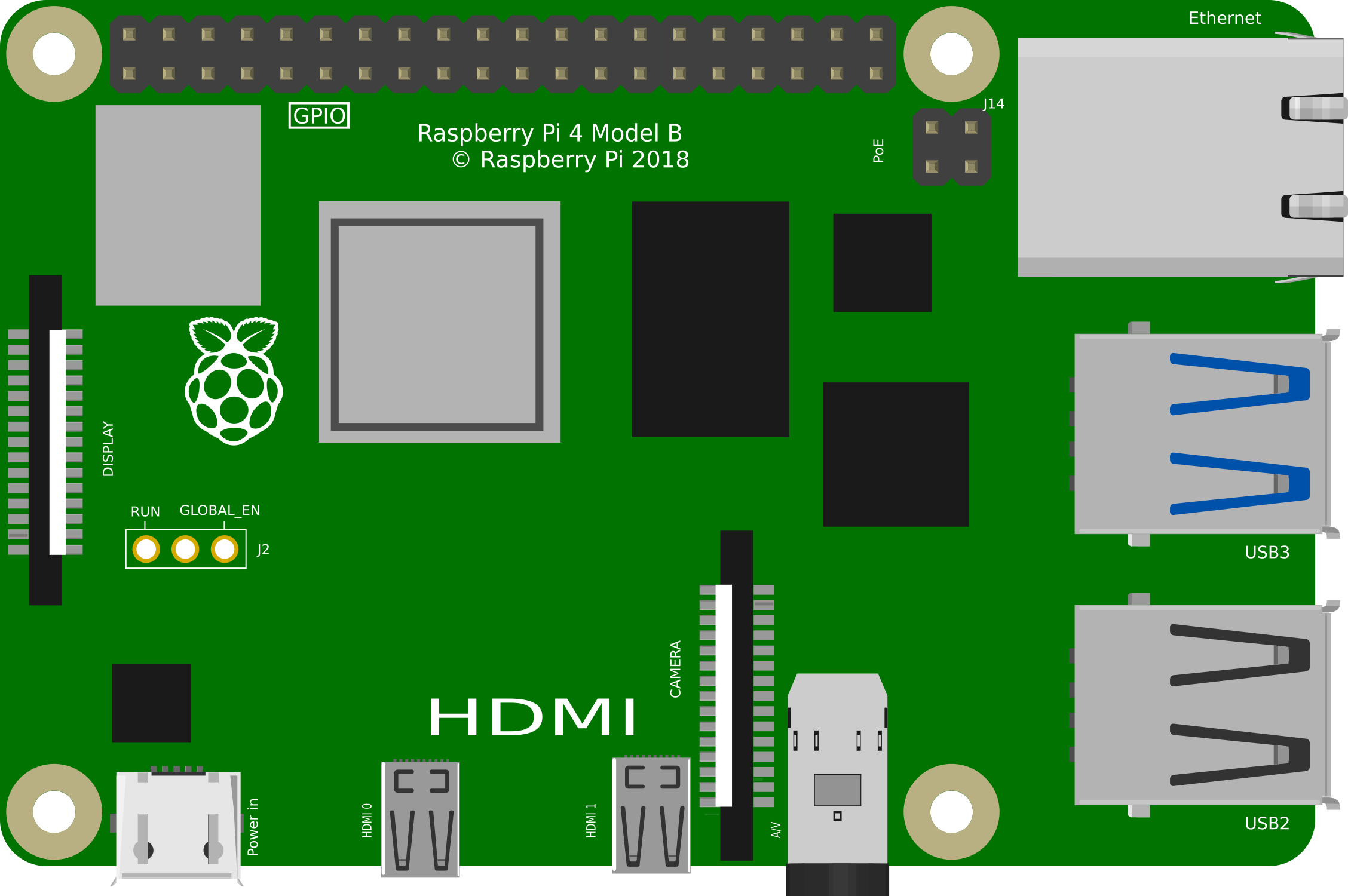
 Design with Raspberry Pi 4B in Cirkit Designer
Design with Raspberry Pi 4B in Cirkit DesignerIntroduction
The Raspberry Pi 4B is a compact, affordable single-board computer designed for a wide range of applications. It features a powerful quad-core ARM Cortex-A72 processor, up to 8GB of RAM, multiple USB ports, dual micro-HDMI outputs, and support for various operating systems. Its versatility makes it ideal for projects, learning, and prototyping in fields such as IoT, robotics, media centers, and more.
Explore Projects Built with Raspberry Pi 4B
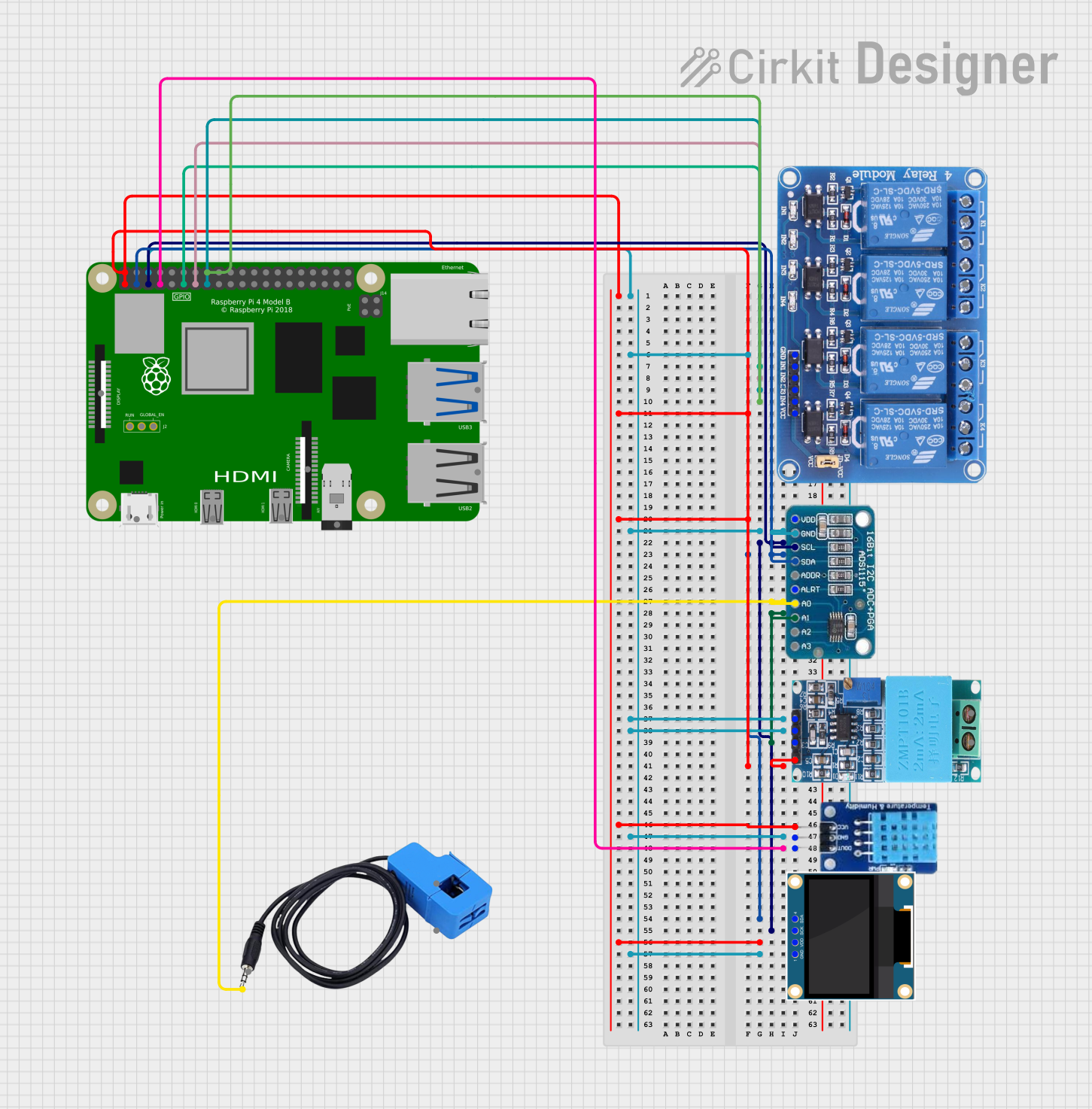
 Open Project in Cirkit Designer
Open Project in Cirkit Designer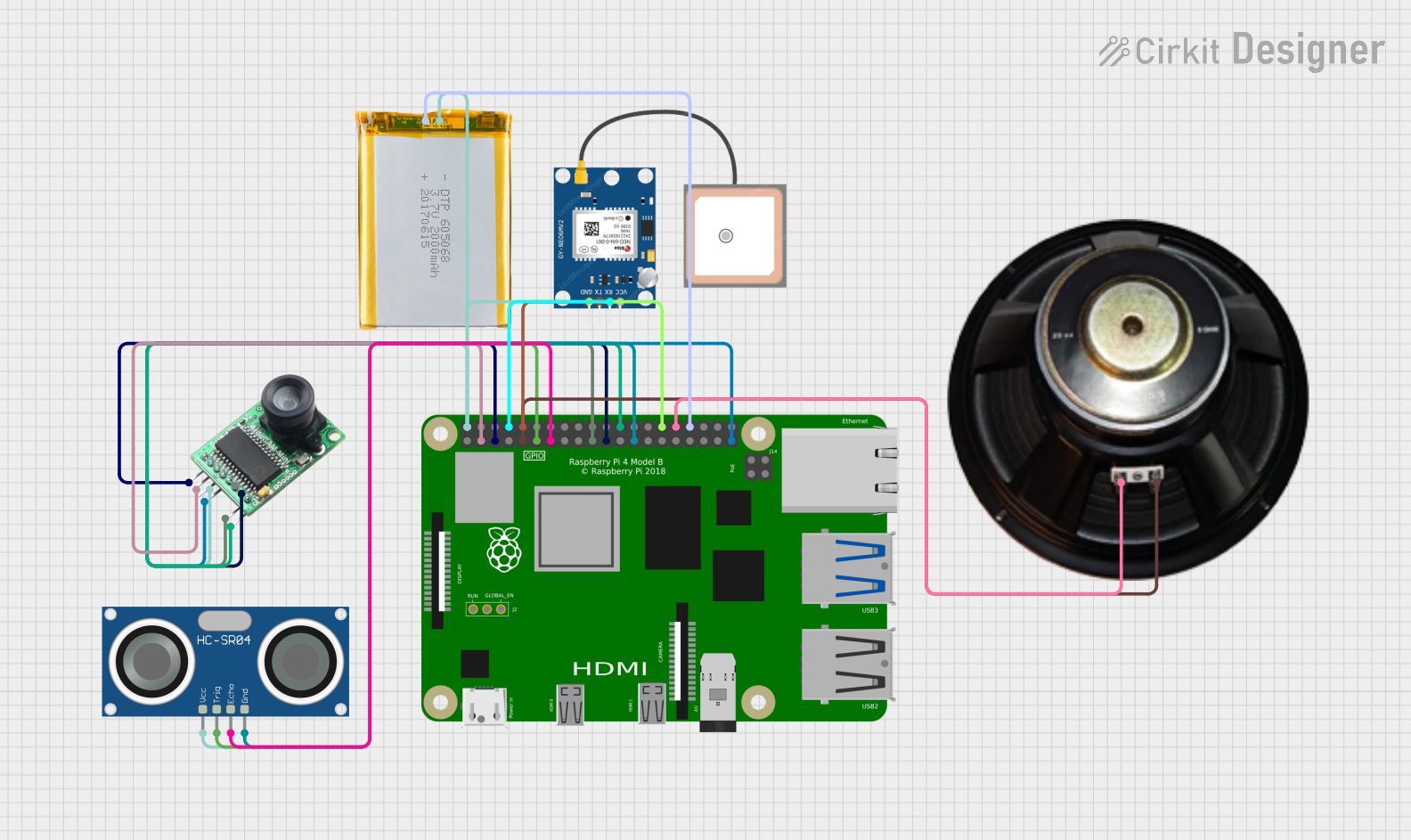
 Open Project in Cirkit Designer
Open Project in Cirkit Designer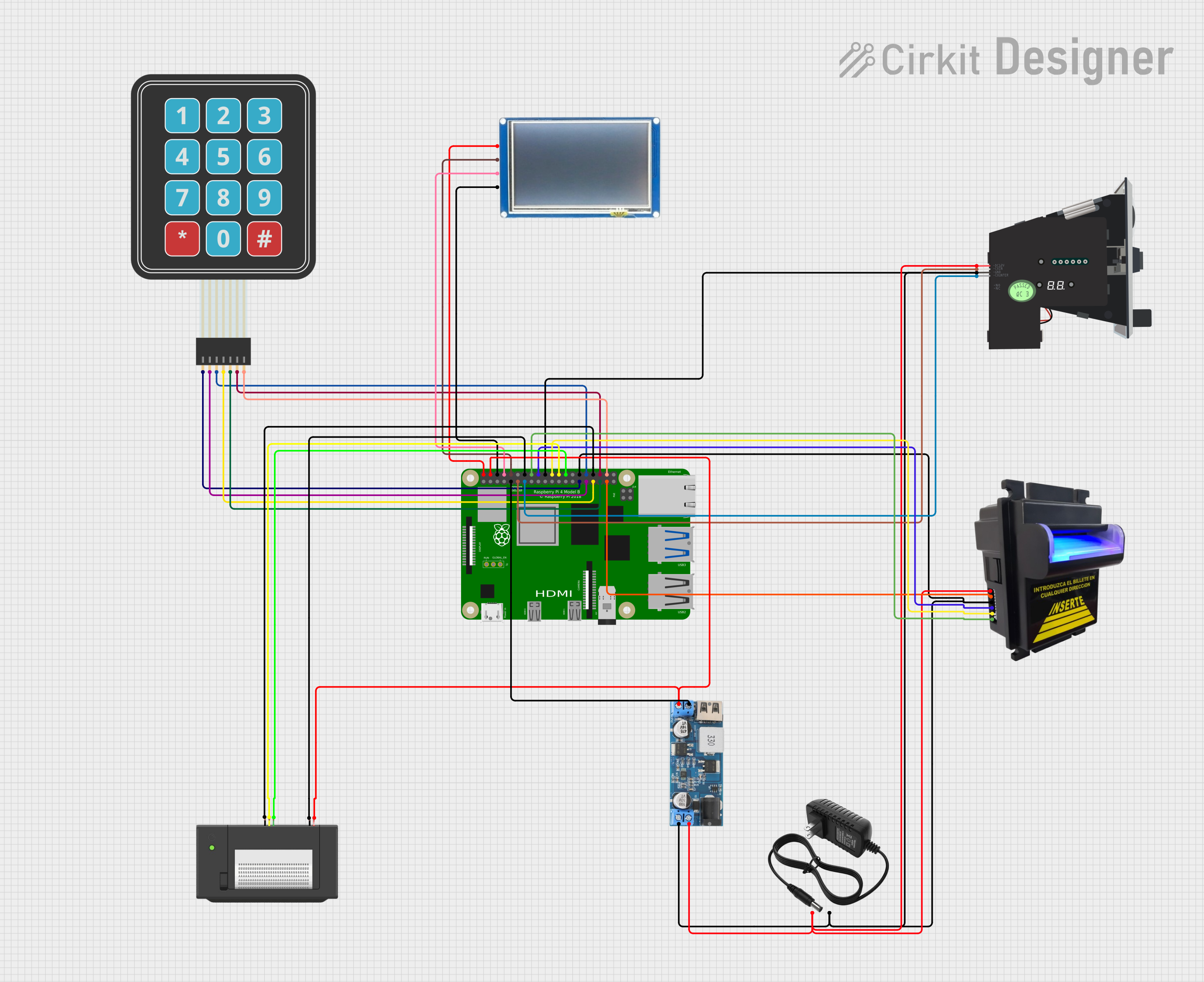
 Open Project in Cirkit Designer
Open Project in Cirkit Designer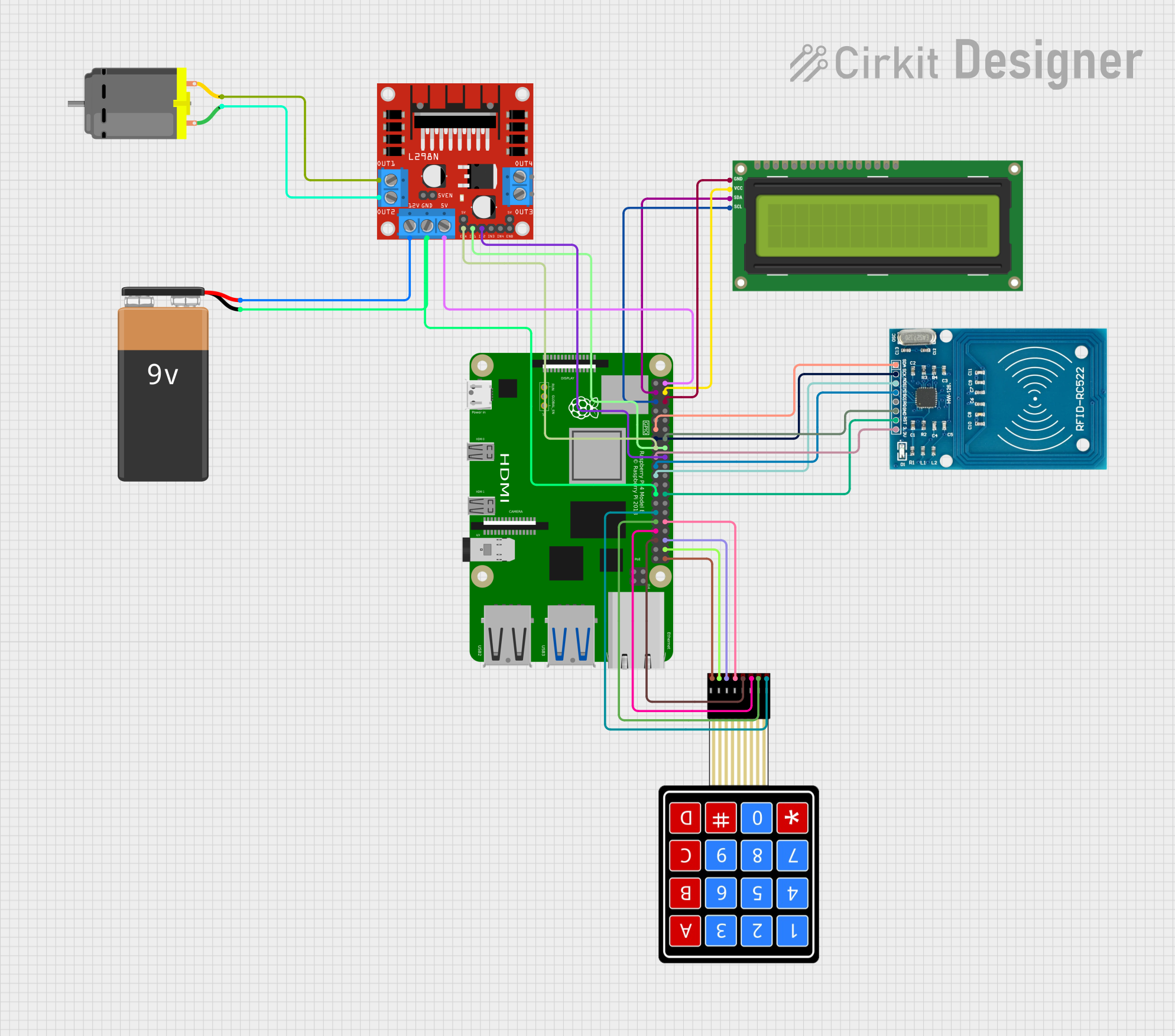
 Open Project in Cirkit Designer
Open Project in Cirkit DesignerExplore Projects Built with Raspberry Pi 4B

 Open Project in Cirkit Designer
Open Project in Cirkit Designer
 Open Project in Cirkit Designer
Open Project in Cirkit Designer
 Open Project in Cirkit Designer
Open Project in Cirkit Designer
 Open Project in Cirkit Designer
Open Project in Cirkit DesignerCommon Applications and Use Cases
- IoT Projects: Acts as a hub for sensors and devices in smart home systems.
- Media Centers: Streams high-definition video using software like Kodi.
- Learning and Education: Teaches programming, Linux, and hardware interfacing.
- Prototyping: Serves as a platform for testing and developing new ideas.
- Robotics: Controls motors, sensors, and cameras in robotics projects.
Technical Specifications
Key Technical Details
- Processor: Quad-core ARM Cortex-A72, 64-bit, 1.5GHz
- RAM Options: 2GB, 4GB, or 8GB LPDDR4
- Storage: MicroSD card slot (supports booting and storage)
- USB Ports: 2x USB 3.0, 2x USB 2.0
- Video Output: 2x micro-HDMI ports (supports up to 4K resolution)
- Networking: Gigabit Ethernet, 802.11ac Wi-Fi, Bluetooth 5.0
- GPIO Pins: 40-pin header (compatible with Raspberry Pi HATs)
- Power Supply: 5V/3A via USB-C
- Operating Systems: Raspberry Pi OS, Ubuntu, and other Linux-based systems
Pin Configuration and Descriptions
The Raspberry Pi 4B features a 40-pin GPIO header. Below is a summary of the pin configuration:
| Pin Number | Pin Name | Description |
|---|---|---|
| 1 | 3.3V Power | Provides 3.3V power output |
| 2 | 5V Power | Provides 5V power output |
| 3 | GPIO2 (SDA1) | I2C Data Line |
| 4 | 5V Power | Provides 5V power output |
| 5 | GPIO3 (SCL1) | I2C Clock Line |
| 6 | Ground | Ground |
| 7 | GPIO4 | General Purpose I/O |
| 8 | GPIO14 (TXD) | UART Transmit |
| 9 | Ground | Ground |
| 10 | GPIO15 (RXD) | UART Receive |
| ... | ... | ... |
| 39 | Ground | Ground |
| 40 | GPIO21 | General Purpose I/O |
For a complete GPIO pinout, refer to the official Raspberry Pi documentation.
Usage Instructions
How to Use the Raspberry Pi 4B in a Circuit
- Powering the Raspberry Pi: Use a 5V/3A USB-C power supply to power the board.
- Connecting Peripherals: Attach a keyboard, mouse, and monitor via USB and HDMI ports.
- Booting the OS: Insert a microSD card with a pre-installed operating system (e.g., Raspberry Pi OS) into the microSD slot. Power on the board to boot.
- Using GPIO Pins: Connect sensors, LEDs, or other components to the GPIO pins. Use Python libraries like
RPi.GPIOorgpiozeroto control the pins.
Important Considerations and Best Practices
- Power Supply: Ensure the power supply provides sufficient current (5V/3A) to avoid instability.
- Cooling: Use a heatsink or fan for cooling during intensive tasks to prevent thermal throttling.
- Static Protection: Handle the board carefully to avoid damage from static electricity.
- GPIO Voltage: GPIO pins operate at 3.3V. Avoid applying higher voltages to prevent damage.
Example: Blinking an LED with GPIO and Python
Below is an example of how to blink an LED connected to GPIO pin 17 using Python:
Import necessary libraries
import RPi.GPIO as GPIO # Library for GPIO control import time # Library for adding delays
Pin configuration
LED_PIN = 17 # GPIO pin where the LED is connected
GPIO setup
GPIO.setmode(GPIO.BCM) # Use Broadcom pin numbering GPIO.setup(LED_PIN, GPIO.OUT) # Set the pin as an output
try: while True: GPIO.output(LED_PIN, GPIO.HIGH) # Turn the LED on time.sleep(1) # Wait for 1 second GPIO.output(LED_PIN, GPIO.LOW) # Turn the LED off time.sleep(1) # Wait for 1 second except KeyboardInterrupt: # Clean up GPIO settings on exit GPIO.cleanup()
Troubleshooting and FAQs
Common Issues and Solutions
The Raspberry Pi does not boot:
- Ensure the microSD card is properly inserted and contains a valid OS image.
- Verify the power supply provides 5V/3A.
- Check for any visible damage to the board.
Overheating:
- Use a heatsink or fan to improve cooling.
- Avoid running intensive tasks for extended periods without proper cooling.
No display on the monitor:
- Confirm the HDMI cable is securely connected.
- Ensure the monitor is set to the correct input source.
- Check the
config.txtfile on the microSD card for display settings.
GPIO pins not working:
- Verify the correct pin numbering (BCM vs. BOARD) in your code.
- Ensure the connected components are functioning and wired correctly.
FAQs
Can I power the Raspberry Pi 4B via GPIO pins? Yes, you can power the board using the 5V and GND pins, but this bypasses the onboard power management and is not recommended.
What operating systems are supported? The Raspberry Pi 4B supports Raspberry Pi OS, Ubuntu, and other Linux-based systems. It can also run lightweight versions of Windows 10 IoT Core.
Can I use the Raspberry Pi 4B for AI/ML projects? Yes, the Raspberry Pi 4B is capable of running AI/ML frameworks like TensorFlow Lite and OpenCV for basic machine learning tasks.
This concludes the documentation for the Raspberry Pi 4B. For further details, refer to the official Raspberry Pi website.